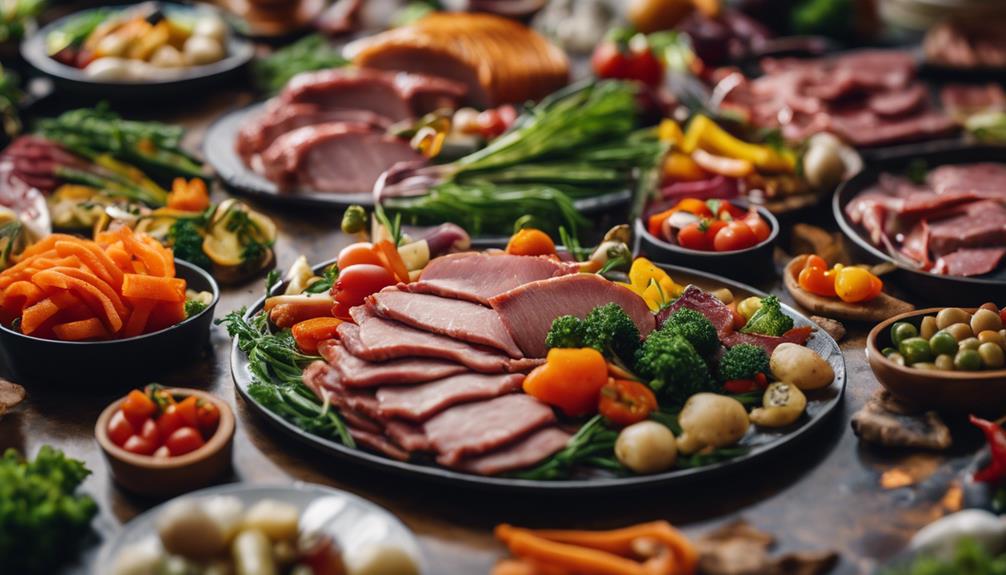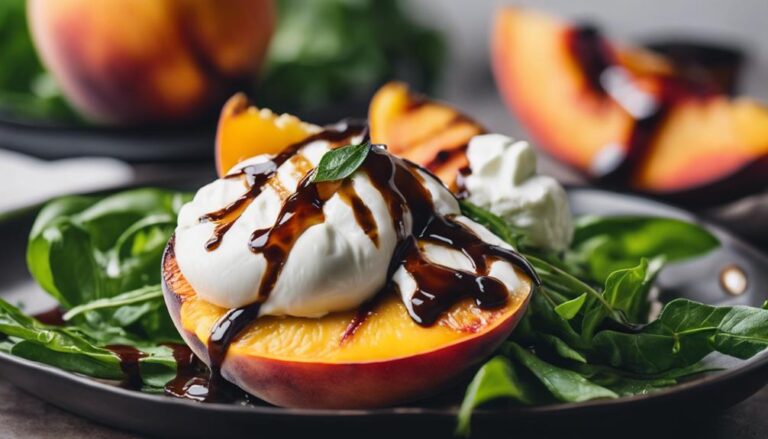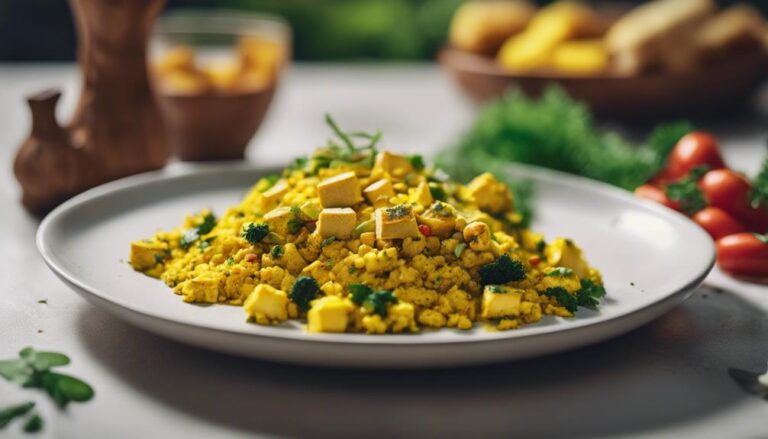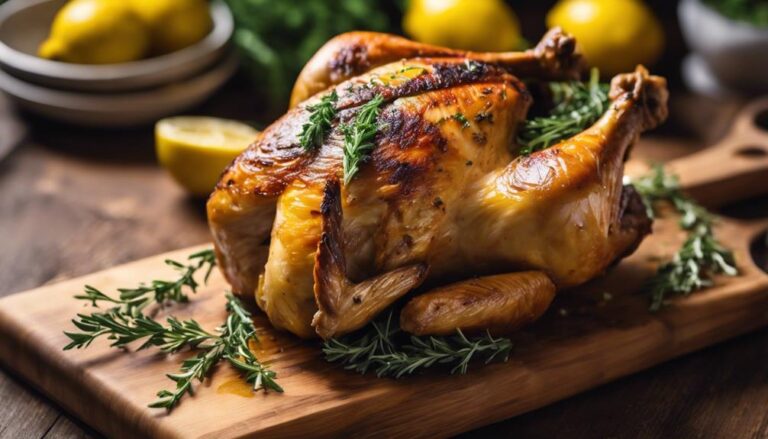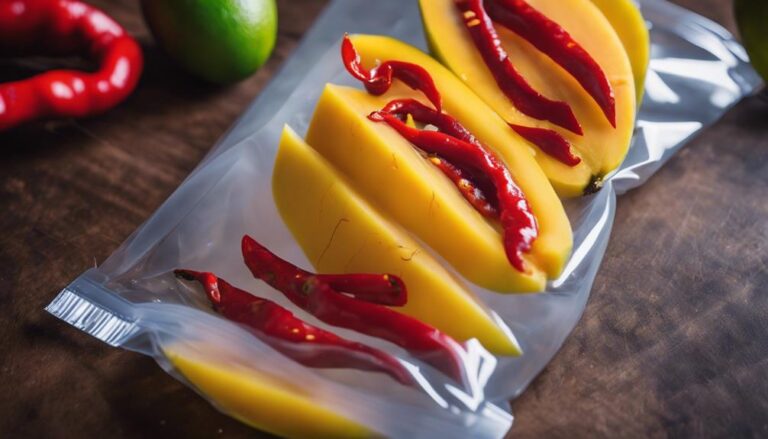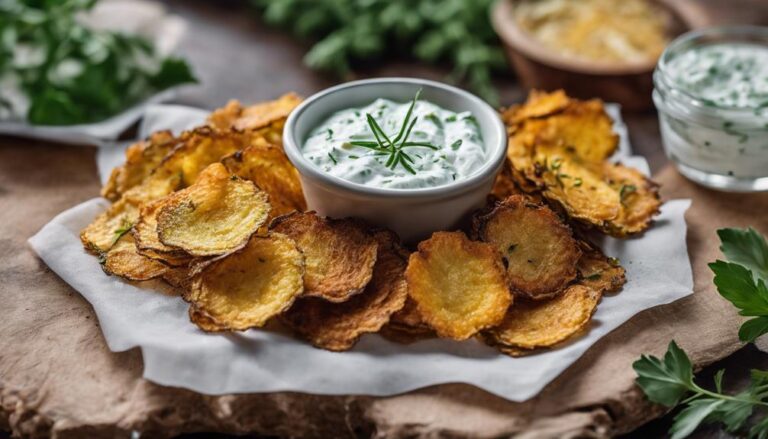Flexible Feasts: Exploring the Flexitarian Diet With Sous Vide Creativity
You're set to combine the health perks of a flexitarian diet with the culinary magic of sous vide. This approach balances plant-based eating with occasional meat indulgence, prioritizing both nutrition and sustainability. With sous vide, you'll lock in the flavors and nutrients of your ingredients, ensuring your dishes are as nourishing as they are delicious. The precise temperature control transforms proteins like tofu and tempeh, and elevates vegetables to gourmet levels, all while retaining their natural textures and tastes. Whether you're experimenting with vibrant veggies or lean meats, you'll master dishes that are both satisfying and healthy. Discover how this blend of flexibility and precision offers endless possibilities for your meals.
What You Will Learn Here
- Sous vide enhances the flavors and nutrients of plant-based meals, aligning with flexitarian principles.
- Precision cooking with sous vide allows for tender, flavorful vegetables and proteins, perfect for a balanced diet.
- The technique supports diverse plant-based ingredients, from tofu to legumes, for creative and satisfying flexitarian dishes.
- Sous vide's temperature control preserves the natural textures and flavors of food, adding a gourmet touch to flexitarian meals.
- Incorporating sous vide into flexitarian cooking offers a novel way to enjoy a variety of nutrient-rich, plant-focused dishes with occasional meat.
Understanding the Flexitarian Diet
At its core, the Flexitarian Diet merges the principles of vegetarianism with the flexibility of consuming meat and animal products in moderation, promoting a balanced approach to nutrition and sustainability. This diet's foundation rests on flexitarian principles that champion a semi-vegetarian lifestyle, focusing heavily on plant-based options while not entirely excluding meat. You're encouraged to explore the vast spectrum of fruits, vegetables, legumes, and grains, notably reducing meat consumption to reap the myriad health benefits associated with a plant-forward diet.
Following a flexitarian diet means you're actively contributing to improved heart health, diabetes prevention, and effective weight management. By cutting back on meat and poultry, you're not only taking a step towards better health but also embracing meal variety that can be both satisfying and creative. Plant-based meals offer a treasure trove of nutrients essential for maintaining a balanced diet, ensuring you get a wide range of vitamins, minerals, and antioxidants.
What's more, embracing the flexitarian way means you'll likely see a decrease in cardiovascular disease risk and improved glucose levels, all while enjoying the freedom to indulge in animal products occasionally, making this diet both flexible and inclusive.
The Basics of Sous Vide Cooking
Sous vide cooking, a method that involves vacuum-sealing food and cooking it in a precisely controlled water bath, enhances the natural flavors and nutrients of plant-based ingredients, making it an ideal technique for those following a flexitarian diet. This approach offers you the freedom to explore a variety of foods while guaranteeing that every meal is cooked to perfection, thanks to its precise temperature control.
| Key Component | Benefit |
|---|---|
| Temperature control | Guarantees even cooking, enhancing food safety and quality. |
| Flavor infusion | Allows herbs and spices to penetrate deeply, elevating taste. |
| Cooking times | Can be precisely managed, making meals simple to plan. |
| Texture retention | Keeps ingredients tender, preserving their natural quality. |
Benefits of Combining Flexitarianism With Sous Vide
Merging the principles of flexitarianism with sous vide cooking techniques can greatly enhance the nutritional value and flavor of your plant-based meals, offering a balanced and delicious approach to eating. This combination guarantees you're not missing out on the freedom to enjoy a variety of foods, including occasional meat dishes, while still prioritizing health and sustainability.
Sous vide's precision in temperature control not only preserves the natural flavors of vegetables and legumes but also improves their texture, making every bite a delightful experience. This method secures flavorful textures and nutrient retention, critical aspects of a health-focused diet. For those exploring meat alternatives, sous vide can transform tofu, beans, and other plant proteins into incredibly satisfying dishes that even meat-lovers would admire. The technique's ability to enhance flavors without extra fats or oils aligns perfectly with a healthy cooking ethos, essential for a balanced flexitarian lifestyle.
Choosing Ingredients for Flexitarian Sous Vide
Having explored the benefits of combining flexitarianism with sous vide, let's now focus on how to select the best ingredients for your sous vide flexitarian meals. When you're picking what to cook, you're not just choosing flavors; you're deciding on the nutritional balance and sustainability of your meals. Here's a guide to help you make those choices with confidence:
| Category | Options | Tips |
|---|---|---|
| Protein options | Tofu, Tempeh, Seitan | Rotate to keep meals exciting. |
| Vegetable varieties | Mushrooms, Bell Peppers, Zucchini | Choose vibrant colors for a nutrient boost. |
| Whole grains | Quinoa, Farro, Brown Rice | Perfect for hearty, satisfying bases. |
| Legume choices | Chickpeas, Lentils, Black Beans | Add for protein and fiber richness. |
| Flavor enhancements | Herbs, Spices, Marinades | Experiment to find your signature taste. |
Balancing these components isn't just about nutritional value; it's about embracing a diet that gives you the freedom to enjoy a wide range of foods without restriction. Remember, the key to a successful flexitarian sous vide adventure is variety—mixing up your protein options, vegetable varieties, whole grains, legume choices, and flavor enhancements keeps your meals both interesting and nutritionally balanced.
Essential Sous Vide Equipment
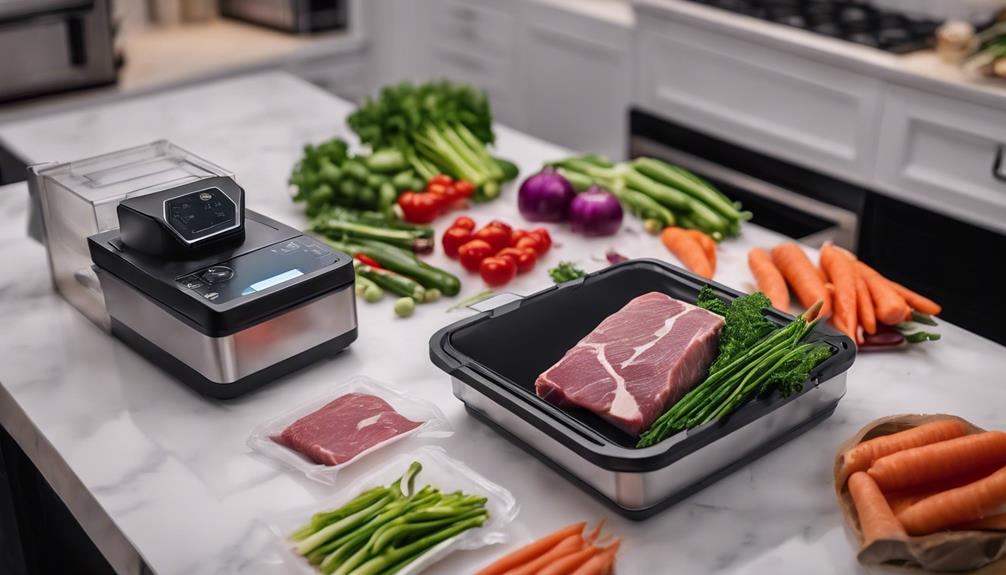
To effectively utilize the sous vide technique in your flexitarian diet, you'll need specific equipment designed for precision cooking. At the heart of this method are sous vide gadgets, specifically a precision immersion circulator. This tool is essential for maintaining a consistent water temperature, ensuring your fruits, grains, and proteins are cooked evenly, preserving their nutrients and flavors.
Your kitchen will also require water bath essentials. An insulated container or a specially designed water bath holds the water in which your food, sealed in bags, will be immersed. This setup is vital for temperature control, a cornerstone of sous vide cooking that guarantees meals are cooked to perfection without the risk of overcooking.
Vacuum sealing is another critical component. A vacuum sealer machine is ideal for sealing food in airtight bags before its food immersion. This process enhances the food's flavor and texture by ensuring that no water gets into the bag during cooking. If a vacuum sealer isn't available, ziplock bags can serve as an effective alternative, provided they're sealed properly to prevent water ingress.
Together, these tools create a seamless cooking experience, giving you the freedom to explore a wide range of plant-based and occasional meat dishes with ease and precision.
Mastering Sous Vide Vegetables
When you master sous vide techniques for vegetables, you're ensuring that their nutrients, flavors, and textures are preserved far better than with most traditional cooking methods. This method gives you the freedom to experiment with flavorful pairings and precise texture control, all while maximizing nutrient retention. By seasoning your veggies before sealing them in a vacuum, you're setting the stage for a culinary experience that traditional boiling or steaming can't match. And with quick finishing techniques, you can add a delightful crunch or char that perfectly complements the tender interior.
Here's a quick guide to get you started:
| Vegetable | Seasoning Tips | Quick Finishing Technique |
|---|---|---|
| Carrots | Honey and thyme | Quick broil for a glaze |
| Asparagus | Garlic and lemon zest | Sear for a crispy edge |
| Sweet Potatoes | Maple syrup and cinnamon | Flash fry for a crisp skin |
This table showcases how you can transform simple ingredients into gourmet sides with just a few steps. Sous vide cooking isn't just about keeping the goodness locked in; it's about releasing your freedom to create dishes that are as nutritious as they are delicious.
Sous Vide Techniques for Meats and Seafood
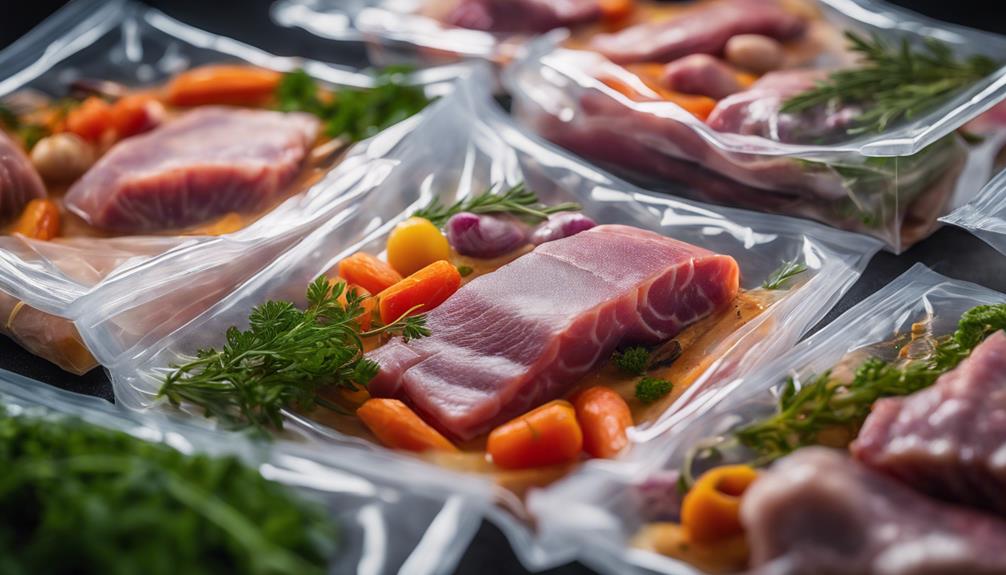
After mastering sous vide techniques for vegetables, you'll find that applying similar methods to meats and seafood enhances flavor retention and texture, perfectly aligning with a balanced and nutritious flexitarian diet. This gentle cooking method, which involves vacuum-sealing food in a bag and submerging it in a precise water bath, offers unparalleled control over the doneness of your proteins, guaranteeing you achieve the exact level of tenderness and juiciness you desire.
Sous vide steak, for instance, emerges with an edge-to-edge perfection that's hard to achieve through traditional cooking methods. The precise temperature control ensures your steak is cooked exactly to your preferred level of doneness, every single time. Similarly, perfect salmon becomes an easy feat, with the sous vide method locking in moisture and flavor, resulting in a dish that's both nutritious and satisfying.
Tender chicken, juicy pork, and succulent shrimp all benefit from this method, showcasing how sous vide cooking can elevate the simplest ingredients into something truly special. By focusing on the quality and doneness of these proteins, you're able to enjoy a flexitarian diet without compromising on taste or nutrition, offering you the freedom to explore a wide range of flavors and textures in your culinary creations.
Creative Flexitarian Sous Vide Recipes
Diving into creative flexitarian sous vide recipes, you'll discover how this innovative cooking method can perfectly blend plant-based ingredients with the occasional meat or animal product, ensuring a nutritious and balanced diet. Sous vide brings out the best in your meals, delivering flavorful combinations that satisfy both your taste buds and nutritional needs. By focusing on whole foods, you're not just eating healthier; you're also indulging in a culinary adventure.
Imagine the innovative pairings you can create: tender, sous vide-cooked tempeh nestled alongside seasonal vegetables, or a perfectly done piece of salmon with a crisp, plant-based side. These dishes benefit from the precise temperature control of sous vide, ensuring that every ingredient reaches its ideal texture and flavor profile. The textural contrasts in these meals—crunchy, creamy, tender, and chewy—add an exciting dimension to your dining experience.
Seasonal inspirations guide the creation of these meals, encouraging you to experiment with what's fresh and available. This not only elevates the taste of your dishes but also supports sustainable eating habits. Through these culinary experiments, you're not just cooking; you're becoming part of a movement that values health, flavor, and the freedom to enjoy the best of both plant-based and meat-inclusive worlds.
Tips for Meal Planning and Prep
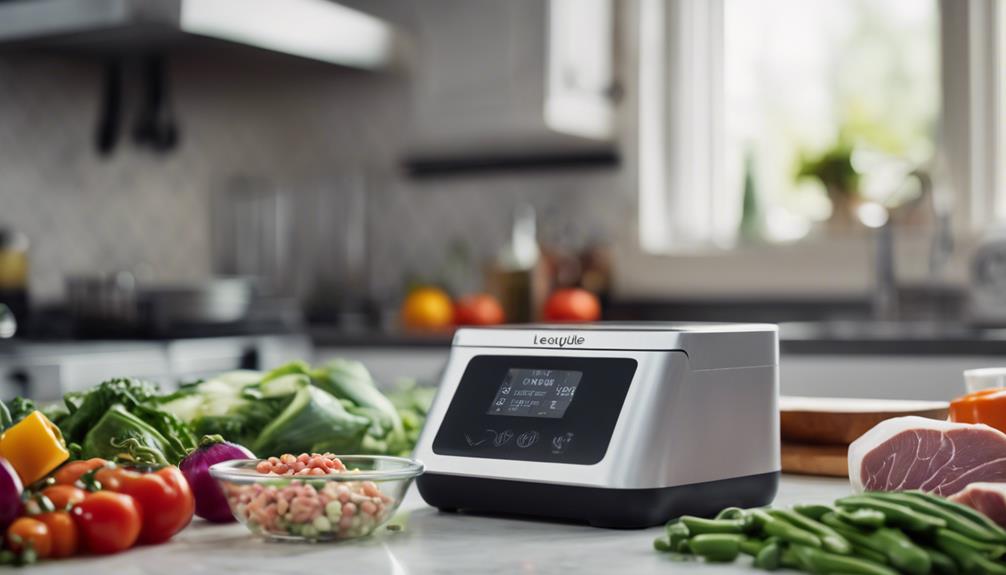
To effectively embrace a flexitarian diet, start by strategizing your meal planning and prep with an emphasis on diverse plant-based foods while minimizing meat intake. This approach not only introduces you to a variety of flexitarian flavors but also guarantees that your meals are rich in nutrients and environmentally friendly.
Begin your meal prep by selecting plant-based proteins, such as tofu, tempeh, and seitan. Marinate these in flavorful marinades overnight to infuse them with rich tastes, making your flexitarian journey both exciting and delicious. These protein pairings can be the cornerstone of your meals, offering you the flexibility to enjoy meatless dishes that are still high in protein.
Remember to batch cook whole grains, beans, and legumes at the start of the week. Having these ready-to-eat sources of plant-based proteins makes it easier to assemble balanced meals on the fly. Experiment with different herbs, spices, and marinades to enhance the natural flavors of your plant-based ingredients, turning simple dishes into gourmet experiences.
Expanding Your Culinary Horizons
Expanding your culinary horizons with sous vide techniques can greatly enhance the texture and flavor of your flexitarian dishes, making every meal an opportunity to explore new taste dimensions. By embracing temperature precision, you're not just cooking; you're carefully crafting each bite. This method guarantees that vegetables, grains, and proteins reach their ideal doneness, opening up a world where texture control is no longer a hope but a standard.
The process of flavor infusion is where sous vide truly shines for flexitarians. Imagine vegetables and plant-based proteins marinated to perfection, each bite a proof of culinary experimentation that's both nutritious and satisfying. Sous vide allows you to infuse your meals with a depth of flavor that's hard to achieve through traditional cooking methods. And, it's not just about taste; it's about retaining the precious nutrients often lost in high-heat cooking.
Nutrient retention is a cornerstone of the flexitarian diet, and sous vide cooking aligns perfectly with this principle. By cooking at precise temperatures, you're ensuring that the health benefits of your carefully chosen ingredients are fully preserved. This method offers the freedom to experiment while maintaining a balanced and nutritious eating style.
Frequently Asked Questions
What Can Flexitarians Eat and Not Eat?
You can eat plant-based proteins, seasonal vegetables, alternative grains, and dairy options. Exotic fruits are also on the menu. You'll limit red meat and poultry, focusing on a balanced, nutritious, and flexible eating style.
What Are the Pros and Cons of a Flexitarian Diet?
You'll enjoy health benefits, better nutrient balance, and reduced environmental impact with a flexitarian diet. It boosts meal variety and social adaptability, but watch out for possible nutrient deficiencies without careful planning.
Is Flexitarianism Flexible or Part Time Vegetarianism?
Flexitarianism's about choosing a flexible, part-time vegetarian lifestyle. It's driven by motivations like environmental benefits and cultural impacts. Meal planning's easier, and social dining's more inclusive, offering freedom in your food choices while promoting health.
Do You Lose Weight on the Flexitarian Diet?
Yes, you can lose weight on the flexitarian diet by focusing on meal planning, nutrient balance, and portion control, without strict calorie counting. This approach leads to healthier weight trends through balanced, plant-based eating.
Conclusion
Embarking on a flexitarian lifestyle with sous vide creativity isn't just about tantalizing your taste buds; it's a step towards a more sustainable and healthier way of eating. By focusing on plant-based ingredients and using sous vide to perfectly cook meats and seafood, you're locking in nutrients and flavors.
This approach supports your health, reduces your environmental footprint, and opens up a world of culinary possibilities. So, immerse yourself in this journey, where every meal is a delicious balance of wellbeing and indulgence.
